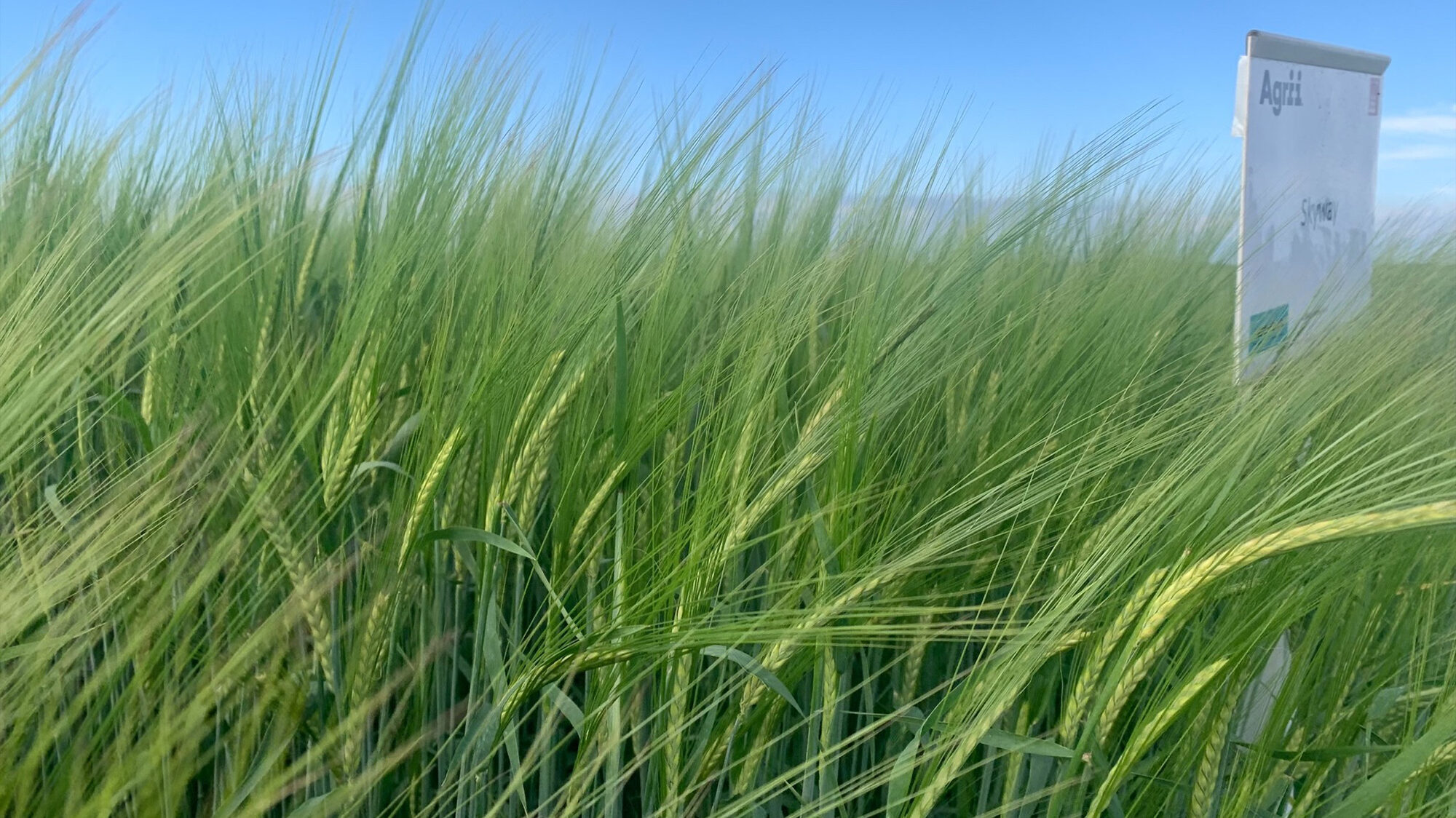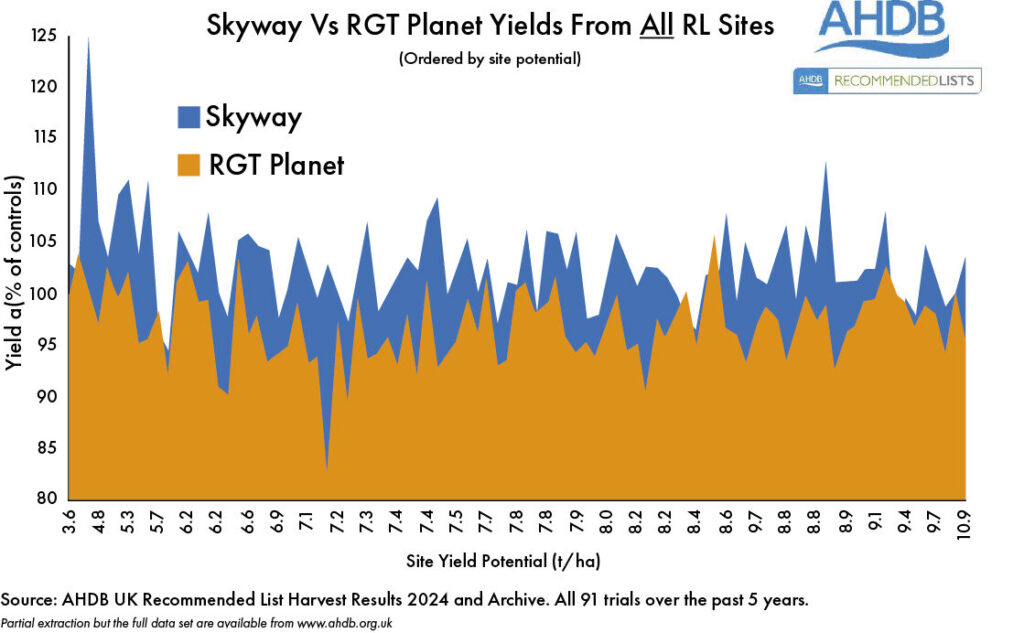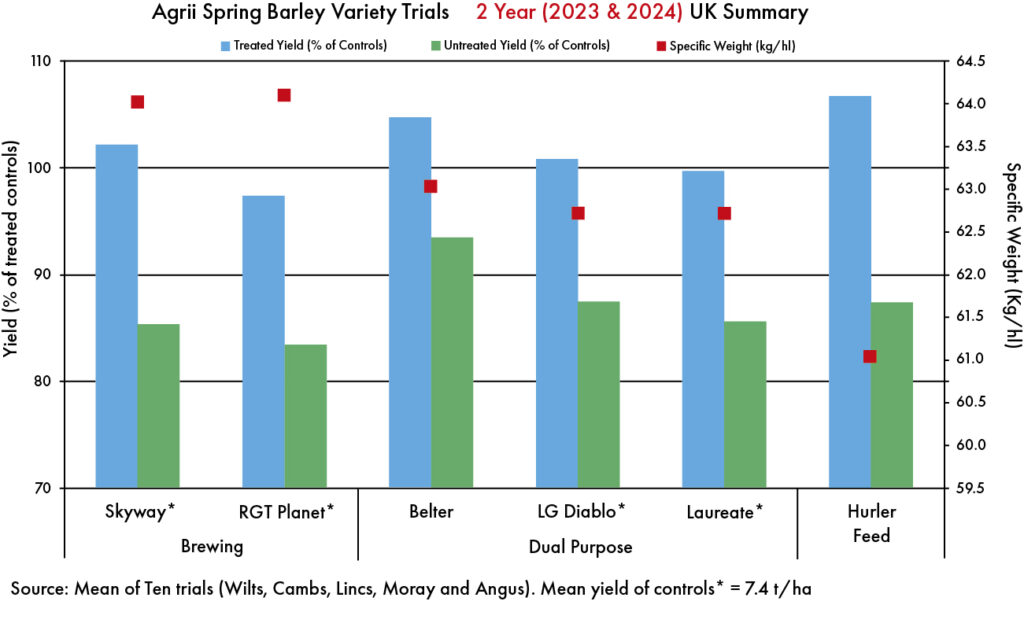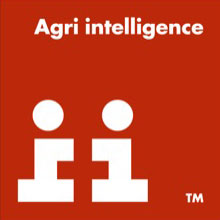
2025 is set to be an important year for Agrii’s long-standing collaborations with two key European barley breeders, Nordic Seeds and Secobra Research. This spring is the culmination of many years of work to identify, test and bring to market those varieties that will lead the market over the next five years or more.
Malting remains the largest barley market segment. In England, before 2013 most spring barley was grown on lighter land as this was best suited to achieving the low grain-nitrogen levels then required by end users. It has since been grown more widely, in part for the opportunity provided to combat black-grass or because land is otherwise unfit for autumn drilling. Changes in the brewing markets also meant that grain with a higher nitrogen content found acceptance. When combined, these factors have helped to ensure the success of spring barley with it proving a resilient crop, in spite of some challenging growing conditions since.
There are 19 spring barley varieties listed on the AHDB Recommended List but only a small number enjoy broad market acceptance and are therefore grown on a significant scale. The market is divided into two with grain for brewing dominating in the south of Great Britain while grain for distilling dominates in the north. RGT Planet and Laureate take the lions-share of the former while Laureate is the most significant variety for distilling by a considerable margin.
The Maltsters’ Association of Great Britain (MAGB) represents the interests of the UK malting industry which purchases about 2 Mt of UK malting barley annually. It runs the Malting Barley Committee (MBC), a body that evaluates and approves malting barley varieties alongside the AHDB trials. Each year they produce a list to show variety approval status.
Skyway – brewing (Agrii/Nordic Seeds)
Skyway gained full approval last May and achieved a significant contract tonnage through Agrii’s grain-partner Viterra. The market feedback was excellent and the variety will be broadly available this spring through Agrii and most other seed merchants. It offers significantly higher yields than RGT Planet (see Fig. 1) and bolder grain than both RGT Planet and Laureate combined with low screening losses.
Skyway is suitable for all regions and soil types with excellent agronomic characteristics including medium height, reasonably stiff straw, average lodging, good brackling resistance and medium maturity. It has a robust disease resistance package with high untreated yields in both Agrii and official results.
It has also proven itself in Agrii direct drilling trials where it consistently out-performed RGT Planet.


Diviner – distilling (Agrii/Secobra Research)
Diviner is the next malt-distilling variety from Agrii’s partnership with Secobra, an industry-owned business that counts Soufflet, Malteurop and the Carlsberg Group and the Maltsters & Brewers Associations of France among its partners. The relationship between Agrii and Secobra Research goes back more than 30 years.
Although at the Provisional P2-stage it is expected to be fully approved in May 2025. It is a specialist distilling variety that has many attributes important to all aspects of the whisky industry. It has very high yields and a higher hot water extract and predicted spirit yield than controls and good fermentability and suitable for pot still malt distilling. Agronomically, it offers early maturing, low skinning levels, good standing, excellent brackling resistance and good disease resistance.
Belter – dual purpose (Agrii/Secobra Research)
Belter’s progression is a year behind Diviner but Belter looks well-placed to become a true dual-purpose variety within the next couple of years. It has shown exceptional yields in both Agrii and official trials and it appears more widely adapted than Laureate with high extract and spirit yield, better fermentability together with good enzyme levels for brewing and export potential. Agronomically, it has stiffer straw, better brackling resistance and higher specific weight than Laureate and low skinning and very low screening losses.
Belter has given the highest untreated yields in both Agrii and AHDB trials, a reflection of its good disease resistance against mildew, brown rust and Rhynchosporium.
Specialist feed
Not all spring barley varieties are destined for malting end-markets and many crops are simply grown as animal feed and for their straw.
Hurler – feed (Agrii/Secobra Research)
Hurler has one of the highest yields of any variety on the Recommended List and is one of only two specifically recommended by AHDB for feed. It is a variety ideally suited to mixed farms with fertile land where it can be pushed for yield because of its exceptionally good straw characteristics. Grain specific weight is one point below that of Laureate and its screenings are in line with most other varieties.
It is very straightforward to manage with relatively short, very stiff straw, outstanding brackling resistance and good all-round disease resistance. It is ideal for the non-specialist spring barley grower who is not looking for malting premiums.


